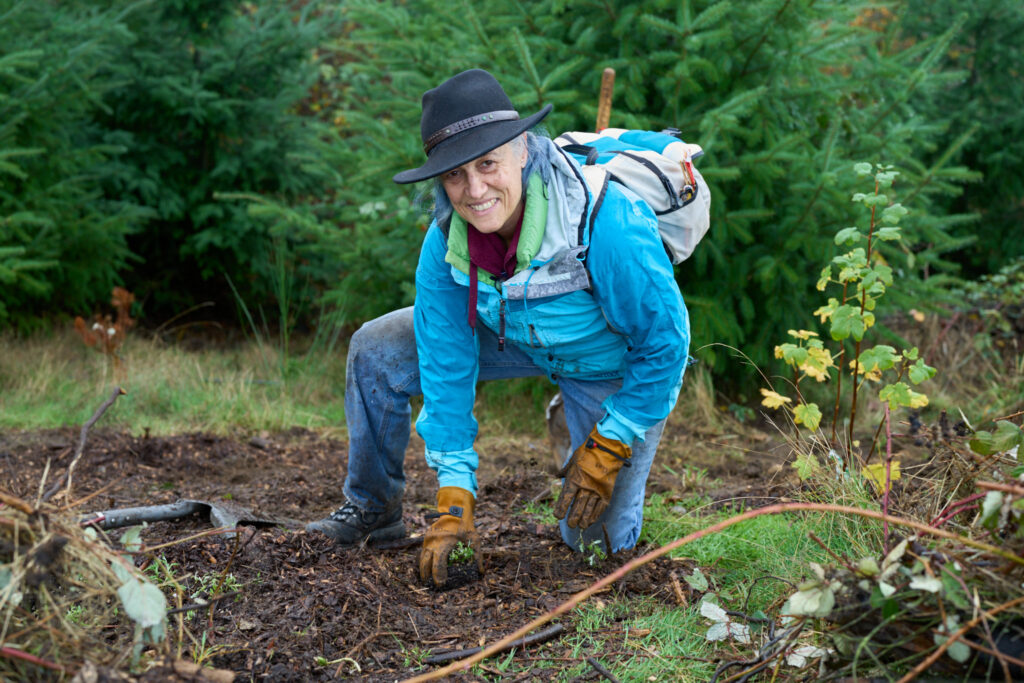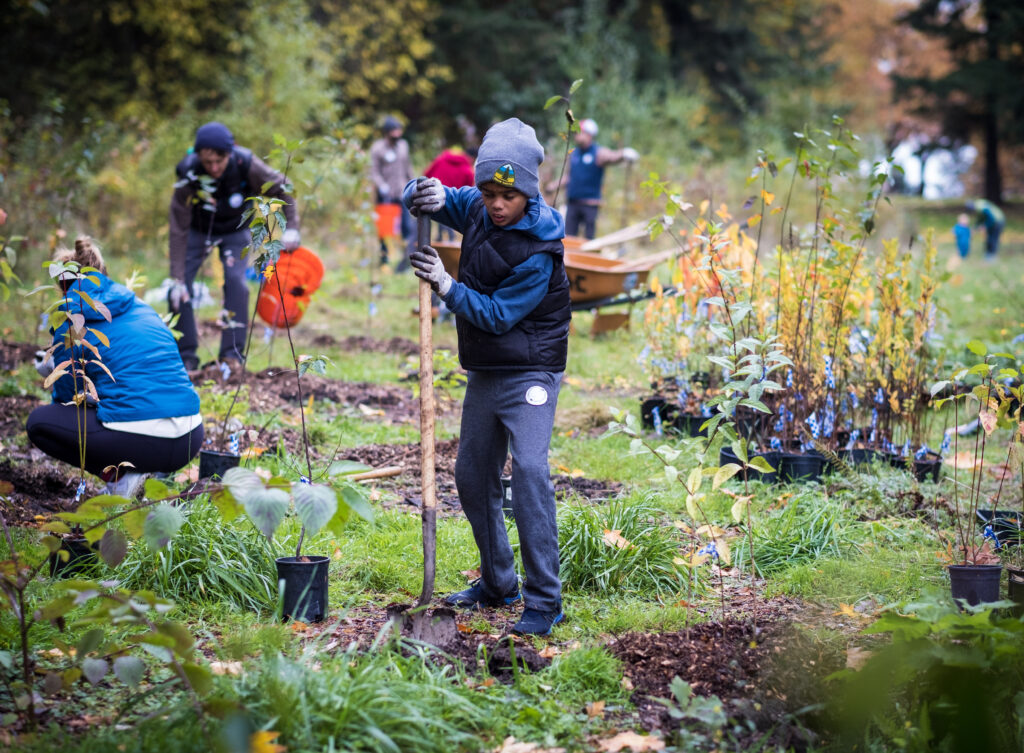Tree’s are our natural lifeline! These breath-giving beauties work to enhance the environment, provide shelter for wildlife, increase community well-being, and hold cultural significance, all the while reducing the harmful effects of climate change.
In Washington State, our urban parks and remote forests are home to these powerful beings that gift us clean air, fresh water, healthy soils, and dense green spaces that light up our landscapes for all to enjoy.
With just one look out of your window or a step outside, you’ll be immersed in native tree species such as Western Hemlock, Douglas Fir, Red Cedar, and Ponderosa Pines (just to name a few!). Sustaining their towering glory is not only essential for the planet, but a lasting community commitment that is of the highest value for our future.
Preparing to Plant
Successful and long-term tree survival is made well through proper preparation. Knowing when to plant, where to plant, what to plant, and how to plant will help to lay the groundwork for ensuring your tree’s not only survive, but thrive! As exciting as it is to plant, having a solid maintenance plan is key for the longevity and health of introducing young tree’s to their new environment.

The fall season is the best time to plant trees in the Pacific Northwest. With the rains swiftly approaching that help to soften the soil and keep young saplings hydrated, it also gives ample time and space for the tree’s and their root systems to properly acclimate before the harsh winter months. Early fall can be an ideal time as temperatures are moderate. It is important to remember to not plant during hot, dry weather or when the ground is frozen.
When choosing where to plant, it is especially helpful to consider sun exposure, rainfall, growth size and rate, drainage, and soil composition as these will all serve to feed the young saplings. Conifers or evergreens prefer cool, wet winters and moderate summers making them ideal for the Pacific Northwest climate. Deciduous trees grow all over the world, however, they do best in temperate or moderate climates that have a winter season and rainfall throughout the year. Doing your research ahead of time is all part of preparing your trees and their survival.
The Pacific Northwest is home to a variety of native tree species. Some of the most common you’ll find in your backyard are Red Alder, Bigleaf Maple, Western Crabapple, Oregon White Oak, and Douglas Firs (amongst many more!). With so many species from firs, pines, cedars, spruces, alders, hemlocks, junipers, and yews, the Pacific Northwest has quite an abundant array of native trees to select from. It is highly important to plant native species that align with the site location to ensure an overall healthy ecosystem, and too eradicate introduced or displaced plant species that harm our forested areas.
Tips for Healthy Planting
Once you’ve done your tree-search, selected your planting site, and gathered your native trees; it’s time to get to the fun part: planting!
You’ll want to begin by digging a hole two times the width of the pot, and to clear away any loose material such as rocks.
Then gently press or scrunch the sides of the pot with your hands to help loosen the roots from the pot.
By holding the base of the stem with your hands and inverting the pot upside down, you can remove the plant from the pot carefully and fully intact.
Once your plant is removed from the pot, begin to loosen up the root ball with your hands so the roots are facing down and out. This ensures the roots are not stuck in the circular formation of the pot thus cutting off circulation to the tree. Remember to be gentle with roots, but know that some of the roots may be broken in this process.
Next you’ll want to center your tree in the hole you dug, with the root collar flesh with ground. If planted too deep, the stem could rot, and if planted too shallow, the roots could dry out. Once your tree is aligned, it needs to be packed into place. Begin to backfill and compact the native soil around the plant to establish a strong foundation and remove all air pockets. Pack the soil to the root collar, but no higher!
Once your tree is planted, gently do a “tug-test” by pulling the plant stem to make sure it remains in the earth. If the tree comes out easily, it needs to be more tightly packed to make sure it is properly incorporated into the ground.
Lastly, you’ll need to mulch your tree by adding a donut shaped ring no more than 3 inches away from the base, and 3 ft around the entirety of the tree. This helps to nourish the soil, prevent any weeds from emerging, and protect the new baby sapling.
Maintenance
Now that your tree is happily planted into the ground, it is important to remember that maintenance is essential for the continued growth of the plant. This includes activities such as watering, mulching, and periodic check ups in the first three years as it becomes established in its new environment. Taking care of your tree is much like taking care of any other living being, with special care and attention.
Ready to Root
So what are you waiting for? Plant trees, be happy! Right now is the perfect time to get involved with the many on-going and upcoming volunteer work parties in your neighborhood! Check out Seattle Forest Week and Green Seattle Day for more information on how you can celebrate our urban Seattle parks and help to grow a forest near you!



Thank you for this wonderful article